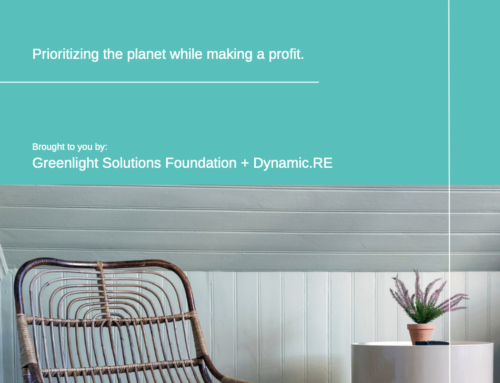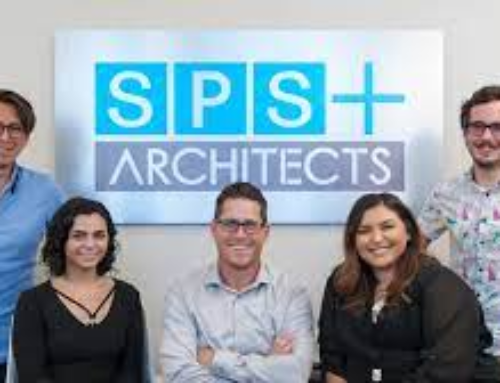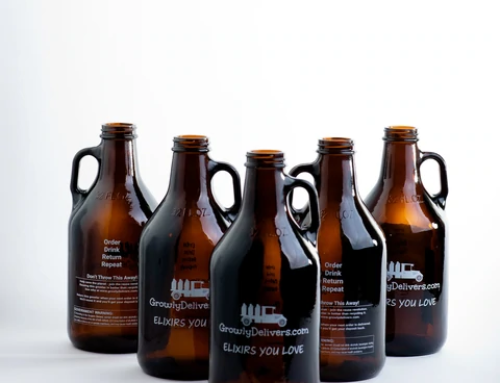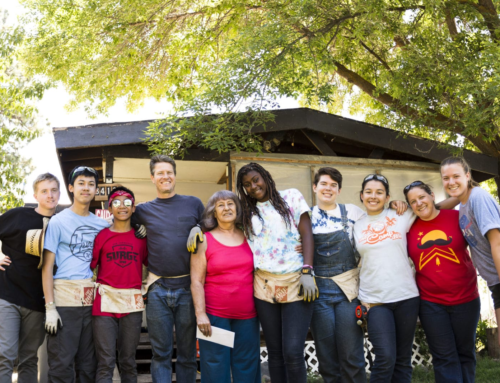In sustainability, we learn much about the complexities of our problems. As my first semester with GreenLight Solutions comes to a close, I am happy to say I was able to see these complexities first hand. Similar to the rest of my team, I was a GreenLight newbie when we met at our retreat in the beautiful Arizona desert. It was during these two days that I knew I made the right choice by joining GreenLight. This was more than just another school club, it was clear from the onset that this student organization has big plans. My group and I were assigned to the Stardust project: a partnership with local nonprofit, Stardust Building Supplies.
Stardust operates out of Mesa, Arizona where they resell used building supplies at low costs. They offer deconstruction services to individuals or businesses who are building or remodeling and in addition, help divert an impressive amount of waste from the landfill. What might be most impressive from a sustainability perspective is the formation of a local circular economy within the community. Stardust’s business practices are a model of the sustainable world we seek and our group was excited to get working. However, we never expected the difficulties that would arise in the duration of our project.
After the retreat we met our Project Partner, Chelsea Pickett, an ASU alumni and Business Development Manager at Stardust Building Supplies. She gave us a tour around the warehouse which housed everything from living room furniture to kitchen sinks and doors…lots of doors. Our focus of the warehouse was the granite. Chelsea explained that everyday they remove granite counter tops from homes in the process of remodeling. The adhesive binding that secures the granite counter tops in place makes removal difficult and often results in broken pieces. Since Stardust lacks a fabricator to fix or rebuild the counter tops, the broken pieces get thrown in the dumpster which eventually end up in the landfill. In fact, so many counter tops make their way to Stardust that the granite waste is enough to fill a 40 ft dumpster every single month. This seems like a lot, and it is, but to put it in perspective, this is only a fraction of the over 500 million tons of building material waste generated by the US every year (EPA.gov). When seen through this lens we realize how unsustainable this is, and therefore understand why nonprofits like Stardust are so important.
To help their on-going mission of diverting waste from the landfill, Chelsea challenged us to find potential partners who would be willing to take the granite. Fresh from the meeting, our team was excited to get started. We felt confident we could get this done as we developed a list of prospective partners we were sure would want granite. Landscaping, construction, and fabricators were all businesses we felt could be partners. Before the first call was made, we thought we had this in the bag.
As the weeks went on we still had zero partners. Our master plan was falling apart as we dealt with the realities of granite reuse and recycling. How naive of us to think we could solve such a big sustainability problem with some cold calling. This is where those classrooms lessons on complexity applied themselves in the real world. We were not just dealing with granite waste, we were dealing with businesses, individuals, bureaucracy, and ideas over material reuse.
As it turns out, landscaping and construction companies have their own issue with granite waste and therefore didn’t need anymore. Fabricators have their own waste as well and when we attempted to pitch our granite waste as training ground for newly hired fabricators they notified us that these positions have a very small turnover. Besides our faulty preconceived notions, there is also the idea around sustainability. As passionate as we may be about sustainability, the fact remains the rest of the world is not yet as passionate or even understands the scope of the problem. Even if a landscaping company did want to partner with Stardust, they would need a viable market of individuals who want recycled materials and unfortunately that market is not there. We are talking about people who are throwing away perfectly good counter tops to replace it with a newer counter top every couple years. Our group realized we were not just battling waste, we were battling ideas and market-driven minds states of over-consumption. Like so many of us in the developed world, people in the market for home remodels are oblivious to the harm they cause. No matter how much sense it makes for a landscaping company to repurpose used granite, it does not matter if the market is demanding brand new materials.
Like any good team we tried to overcome these challenges. If fabricators won’t take it, then surely quarries would! They would just crush the granite into gravel, right? Once again we thought we figured it out, and again were humbled. This time, it was not an issue based on excess but one based on material purity. These quarries have customers as well and verifying how a product is made is important to their business. There is no history or paperwork of how these granite counter tops were made in the first place. Additionally, they were hesitant about the adhesive used to mount the counter tops. There were simply too many questions that we had no way of answering and quarries cannot deliver gravel to customers without being able to answer them. Furthermore, this industry is so intense with purity standards that if a customer orders gravel, it gets delivered, and then they decide they don’t like it, whatever company they purchased it though won’t even take it back. Once it leaves that businesses hands, it is considered contaminated.
As the weeks ticked by it was difficult to maintain the same level of excitement we had when leaving our meeting with Chelsea. Our first foray into the world of sustainability was turning out to be a disaster and we were running out of options. We finally struck luck when we contacted the Herberger Institute for Design and the Arts at ASU. Going after artists was a bit of a wildcard pick, but what other options did we have? Our hunch worked and Hergerber allowed us to post a flier to their in-house network of student artists. Within a couple of days we had several artists reaching out who were interested in sculpting with granite. Again we were humbled as our best ideas delivered nothing and our seemingly worst idea delivered something.
By the time our Solutioneer Showcase came around we had at least something to show. Chelsea agreed to have a small bin with broken granite available to artists for a small donation. Although nowhere near the big plans we initially set out with, we were happy to have something. Stardust was started with the idea of making a difference in the community and we are overjoyed at being able to further help the idea of community by connecting Stardust with local artists.
Maybe finding sustainable solutions starts at the local level between people who are passionate about it. While we did not end up with the results we hoped for, we did learn that some sustainability-related problems might be too big to tackle at once. People’s beliefs and market based-approaches are two factors we did not anticipate originally. This added layers of complexity to our partnership that made it difficult to achieve our goals. Being a part of Greenlight Solutions gave us unique experiences as students: a glimpse into the difficulties and challenges awaiting us as sustainability professionals. Making a difference is about more than having passion, it’s about understanding the complexities between socio-economic relationships. Being Solutioneers humbles us through hardship and failure, but gives us a bigger understanding of sustainability as a whole.
I would love to shout out my amazing Stardust team: Kait Speilmaker, Sydney Millerwise, Christian Volp, Rachel Atidormi, and of course our partner, Chelsea Pickett. Thanks to our leadership crew and Board of Directors for all your help!
Written by Joshua Verdugo
Stardust Building Supplies Fall 2019 Project Team: Kait Speilmaker (Project Lead), Joshua Verdugo, Sydney Millerwise, Christian Volp, Rachel Antidormi
Thank you for reading our blog! Leave a comment & share on social media.
➡ Get involved: Businesses | Students | Professionals | Colleges | Volunteer
➡ Support our sustainability initiatives: Donate Now | Give Monthly | Sponsor
➡ Follow us on social media: Facebook | LinkedIn | Instagram | Twitter





